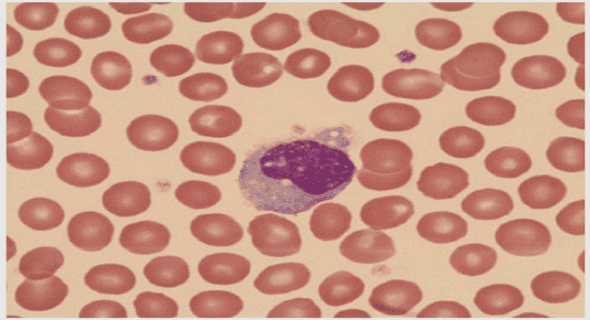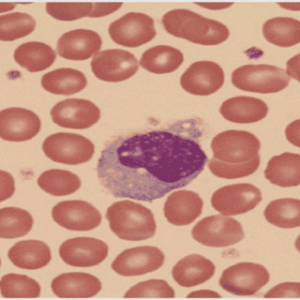(Downloads - 0)
For more info about our services contact : help@bestpfe.com
Table of contents
General Introduction
1. Literary Review
Introduction
1.1 UV-Induced DNA Lesions
1.1.1 Cyclobutane pyrimidine dimer, CPD
1.1.2 Pyrimidine (6-4) pyrimidone photoproduct, (6-4) photoproduct
1.2 Photolyases and Cryptochromes
1.2.1 Structure of the cryptochrome and photolyase family
1.2.1.1 Phylogenetics
1.2.1.2 Primary and secondary structure
1.2.1.3 Chromophores
1.2.2 Photolyases
1.2.2.1 CPD photolyase
1.2.2.2 (6-4) photolyase
1.2.3 Cryptochromes
1.2.3.1 Plant cryptochromes
1.2.3.2 Animal cryptochromes
1.2.3.3 DASH cryptochromes
1.2.3.5 Dual-function cryptochromes
1.2.3.4 CryPro cryptochromes
1.3 The reaction mechanisms of photolyase
1.3.1 Photorepair
1.3.1.1 Photorepair by CPD photolyase
1.3.1.2 Photorepair by (6-4) photolyase
1.3.1.3 Photorepair of the T(6-4)C photoproduct
1.3.2 Photoactivation
1.3.2.1 Photoactivation of CPD photolyase
1.3.2.2 Photoactivation of (6-4) photolyase
1.3.2.3 Cryptochrome photoreduction
1.4 The flavin cofactor of the (6-4) photolyase
1.4.1 Flavins in solution
1.4.2 Flavins in photolyase
Conclusion
References
2. Photoactivation
Introduction
3.1 Structural analysis of the X. laevis (6-4) photolyase
3.1.1 Sequence alignment
3.1.2 Homology model
3.2 Spectroscopic study of the wild type X. laevis (6-4) photolyase
3.2.1 Steady-state spectra
3.2.2 Isotropic femtosecond transient absorption spectroscopy
3.2.2.1 Initial transient absorption spectrum
3.2.2.2 Spectral dynamics of the isotropic transient absorption
3.2.2.3 Global kinetic analysis of the isotropic transient absorption spectra
3.2.2.4 Nature of the photoproducts
3.2.2.5 Elementary kinetic model
3.2.3 Polarised femtosecond transient absorption spectroscopy
3.2.4 Femtosecond transient absorption anisotropy
3.2.4.1 Sensing the orientation of the WH●+ radical
3.2.4.2 Raw transient anisotropy
3.2.4.3 Global kinetic analysis of the raw anisotropy spectra
3.2.4.4 Species-associated anisotropy spectra
3.2.4.5 Errors on the anisotropy
3.2.4.6 Expected anisotropies based on the homology model
3.2.4.7 Comparison of experiment with simulation
3.2.4.8 “Millisecond constant”
3.2.5 Nanosecond transient absorption spectroscopy
3.2.5.1 Polarised transient absorption decays
3.2.5.2 Anisotropy in the ns timescale
3.2.5.3 Isotropic transient absorption in the ns-μs timescale
Conclusion
References
3. Photorepair
Introduction
3.1 Photorepair of the T(6-4)T photoproduct by (6-4) photolyase
3.1.1 Absorption spectra
3.1.1.1 T(6-4)T photoproduct
3.1.1.2 Fully reduced X. laevis (6-4) photolyase
3.1.2 Photorepair under steady-state irradiation
3.1.2.1 Observation of T(6-4)T and TT restoration
3.1.2.2 Photorepair of the normal substrate
3.1.2.3 DMAD actinometry
3.1.3 Photorepair under single-flash excitation
3.1.3.1 Single-flash excitation
3.1.3.2 “Stairs” experiments
3.1.4 Characterisation of X
3.1.4.1 The observation of X
3.1.4.2 The decay of X
3.1.5 Quantitative analysis of the proposed reaction scheme
3.1.5.1 Analysis of the suggested repair reaction scheme
3.1.5.1.1 General assumptions
3.1.5.1.2 Continuous light excitation
3.1.5.1.3 Single flash excitation
3.1.5.1.4 Flash sequence (“stairs”)
3.1.5.2 Estimation of the repair quantum yields η1 and η2
3.1.5.2.1 Equations for the absorption changes
3.1.5.2.2 Determination of η1 and η2 from flash (first vs. successive) excitation
3.1.5.2.3 Determination of η1 and η2 from flash sequence (“stairs”)
3.1.5.3 Quantum yield uncertainty estimation
3.1.5.3.1 From continuous light excitation
3.1.5.3.2 From flash (first vs. successive) excitation
3.1.5.3.3 From flash sequence (“stairs”)
3.1.6 Photorepair under solar irradiation
3.2 Preliminary study of the steady-state photorepair of the T(6-4)C photoproduct
3.2.1 The T(6-4)C photoproduct
3.2.2 Steady state photorepair of the T(6-4)C photoproduct by X. laevis (6-4) photolyase
3.3 Preliminary studies of T(6-4)T photorepair by femtosecond pump-probe spectroscopy
3.3.1 Reference spectra
3.3.1.1 Steady-state fluorescence spectra
3.3.1.2 Transient absorption spectra of FADH– in solution
3.3.2 Transient absorption spectroscopy of fully reduced Xl64, in the absence of substrate
3.3.2.1 Initial transient absorption spectrum
3.3.2.2 Spectral dynamics of the transient absorption spectrum
3.3.2.3 Global kinetic analysis
3.3.3 Transient absorption spectroscopy of fully reduced Xl64 in the presence of T(6-4)T
substrate
3.3.3.1 Spectral dynamics of the transient absorption spectrum
3.3.3.2 Global kinetic analysis
3.3.3.3 Interpretation
Conclusion
References
4. Experimental
Introduction
4.1 Photorepair
4.1.1 Substrate
4.1.2 Quantum yield determination
4.1.3 Photorepair under steady-state excitation
4.1.4 Photorepair under flash excitation
4.2 Spectroscopic methods
4.2.1 Steady-state spectroscopy
4.2.2 Femtosecond transient absorption spectroscopy
4.2.2.1 Femtosecond laser source
4.2.2.1.1 Ti:Sapphire laser
4.2.2.1.2 Regenerative amplifier
4.2.2.2 Pump beam
4.2.2.2.1 Second harmonic generation
4.2.2.2.2 Non-collinear optical parametric amplifier
4.2.2.2.3 Saturation
4.2.2.3 Probe beam
4.2.2.4 The sample
4.2.2.5 Data acquisition
4.2.2.6 Spectral acquisition
4.2.3 Nanosecond real-time transient absorption spectroscopy
4.2.3.1 Laser sources
4.2.3.1.1 Excitation pulse
4.2.3.1.2 Monitoring light
4.2.3.2 The sample
4.2.3.3 Detection system and data acquisition
4.3 Artefacts
4.3.1 Pump energy fluctuation
4.3.2 White light chirp and t0
4.3.3 Cross-phase modulation and stimulated Raman scattering
4.3.4 3z artefact
4.3.5 “Millisecond constant”
4.3.6 Free flavin
4.4 Data analysis
4.4.1 Spectral analysis of transient absorption signals
4.4.2 Kinetic analysis
4.5 Sample preparation
4.5.1 Xenopus laevis (6-4) photolyase
4.5.2 Reduced photolyase
4.5.2.1 Ultrafast experiments
4.5.2.2 Steady-state photorepair experiments
4.5.3 Oxidised photolyase
4.5.3.1 Femtosecond pump-probe spectroscopy
4.5.3.1 Nanosecond real-time transient absorption spectroscopy
4.6 Homology Modelling
References
Conclusion
Annexes




